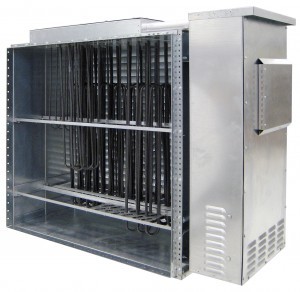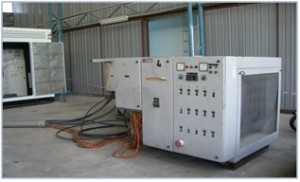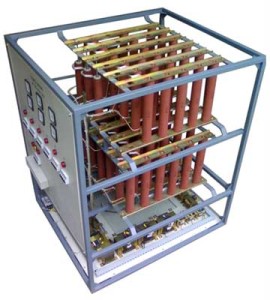
 An Important Aspect of Preventative Maintenance
An Important Aspect of Preventative Maintenance
The purpose of most generator sets is to provide a reliable source of power to your facility or commercial operation during an emergency situation when power from the grid is suddenly lost or is not available in your environment.
In the event of a power failure, one should have peace of mind that their backup power source will kick into action on a moment’s notice. But what happens when the power goes out and Generator Set does not function as expected? The result can often be costly and sometimes catastrophic.
This is precisely the reason generator load bank testing is an essential piece of a comprehensive preventative generator maintenance plan, which you should ideally have conducted on your Generator Set each year.
Load bank testing helps to ensure that your generator will be fully dependable and operational, as well as completely capable of the highest possible load it may be required to handle at any critical point in time.

What is Generator Load Bank Testing?
A generator load bank test involves an examination and assessment of a Generator Set each year. It verifies that all primary components of the generator set are in proper working condition. The equipment used to conduct a load bank test produces artificial loads on the generator by bringing the engine to an appropriate operating temperature and pressure level.
This is especially important for standby and emergency generator sets that do not run very often and/or may not be exposed to carrying heavy loads on a frequent basis. The general rule is – if your generator is not exposed to higher than 30% of its rated kW load then you should be considering a load test.
A load bank test ensures that your generator will run property when its needed so that you can fully depend on it during an emergency situation. The key to a proper load bank test is that it tests your generator at its full kilowatt (kW) output rating. Because many generators do not regularly operate at their full kW rating, it’s especially important that you verify your generator can actually produce the highest possible horsepower that may be required – while at the same time maintaining adequate temperature and pressure levels that will allow it to run as long as necessary.
 How does a Load Bank Test Work?
How does a Load Bank Test Work?
When a load bank test is implemented, an artificial load is placed on the generator. The test is timed and gradually increases the kW load in specific increments. Each time the kW load is increased, the test measures and records critical engine parameters, the generator’s ability to handle the boost, and its ability to continue functioning at the highest possible level for a sustained period of time. The equipment needed to complete the test includes a load bank (machine with kW rated sizes and battery like cables). For more information and to see some load bank tests in action are sure to check out our video above that includes examples of our technicians performing load tests at our facility.

Benefits of Load Bank Testing
There are multiple reasons gensets should undergo a load bank test on an annual basis, including the following:
- Verifies the gensets capabilities opposed to just routinely starting it up
- Problems discovered early can be significantly less expensive and prevents future major issues
- Helps to avoid wet-stacking and cleans out carbon deposits
- Verifies the engine cooling systems will perform while under load
- Provides assurance that the generator set should work properly when you need it most
What’s Included in Diesel Service & Supply’s Load Bank Testing?
Our typical load bank reports include the following:
- KW Load
- AC Voltage
- Hertz
- Oil Pressure
- Amperage Rating
- Voltage Tested
- Additional Notes and Comments